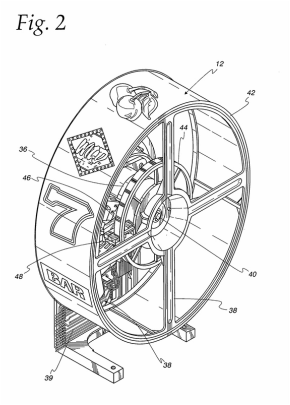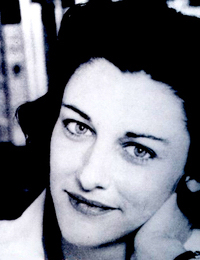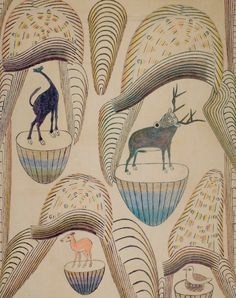|
Have you seen this video? A lonely man: overweight, treated with many kinds of medications, is advised by a nutritionist to adopt a shelter dog. The nutritionist didn't prescribe more medication, didn't reproach the man for not eating well- she suggested a relationship as a way to start a new chapter.
Therapy is kind of like that too, by the way. However, at this moment I'm thinking about how powerful it is when people can make that gesture- instead of piling up those pills, supplements, shakes, smoothies, exercise drills, even meditation- offer the promise of a relationship. We don't know why Eric found himself in this lonely space. We can assume that something got in the way between Eric and other people which did not allow him to get support from others. Perhaps he kept his feelings tucked inside of him. He says he became more and more ashamed of himself which made it even harder to ask for that support. He did ask for support from professionals, maybe some of them further shamed him (like the doctor who advised him to buy a burial plot- gee, that's helpful). Luckily, this nutritionist who gave him advice that really clicked. Peety and Eric formed something that was not present in the world before they met. They formed their own ways of doing things, their rituals, their jokes, their shared moments. Their relationship was three dimensional: there was Eric, there was Peety and there were all those creative, unexpected things that happened between them. I think this is what made it so meaningful for Eric and that's what makes us feel empathy, tenderness and sadness when we watch Eric's video. Medication saves lives, exercise regimes are useful and so is meditation. However, those things lack the three dimensionality that comes with a relationship between two living things (perhaps, more specifically: two mammals). It was the relationship that made Eric feel alive again. He felt needed, trusted and capable- which, if you think about it, are necessary components for us to keep living in this strange world.
0 Comments
Poetry has a special place in my life. Ann Sexton was one of the poets I discovered early on and even had the opportunity to translate and the good fortune to have the translation published. Sexton, a troubled soul whose encounters with the mental health system of her time were depicted in many poems, has a lot to teach about our profession, it's challenges and it's beauty.  Said The Poet To The Analyst My business is words. Words are like labels, or coins, or better, like swarming bees. I confess I am only broken by the sources of things; as if words were counted like dead bees in the attic, unbuckled from their yellow eyes and their dry wings. I must always forget how one word is able to pick out another, to manner another, until I have got something I might have said... but did not. Your business is watching my words. But I admit nothing. I work with my best, for instances, when I can write my praise for a nickel machine, that one night in Nevada: telling how the magic jackpot came clacking three bells out, over the lucky screen. But if you should say this is something it is not, then I grow weak, remembering how my hands felt funny and ridiculous and crowded with all the believing money.
I recently came across the art of Martin Ramirez who was a Mexican migrant worker. He came to California leaving his wife and children behind to work on the railroads. He lost his job during the great depression, he didn't go back home probably because his ranch in Jalisco had been devastated by the Cristero Rebellion that started in 1926, the year after he had left. He didn't speak any English. Apparently he became psychotic, or someone thought he was. He was taken to a psychiatric hospital where he did not talk to the staff and was diagnosed as Catatonic Schizophrenic. Ramirez spent the rest of his life in hospitals in California. He drew with melted crayons, sometimes mixed with oatmeal, juice and spit. He created collages and elaborate works over the 32 years in which he spoke to nearly no one, or perhaps nearly no one spoke to him. One of his doctors loved his work and provided him with materials. He probably studied his "case" in search of the connection between "mental illness" and "creativity". The connection between the two is indeed fascinating- is it that people who are creative become ill or do ill people become more creative? that is often the question asked. What if we think about it differently: what if we say that some people have lots of receptors to the world- they can take in nuances that other people can not. When those things that are taken in have an environment- internal and external, which is rich and safe, all those nuanced information can translate itself back into the world in different forms. This is what we call creativity. Those lucky ones can choose the form of their creativity- some become artists and writers, others become chefs or soccer players or doctors. However, many of us don't have a good enough environment, even if we do have all those receptors and we do internalize the world in a rich way. I think this is when people feel like they NEED to be creative, which is different from just taking advantage of the ability to be creative. Those are the people whose life has no meaning to them if they don't write, or volunteer to save elephants or write articles or or think run marathons. These are people who feel things deeply but don't have enough of an internal and external supportive environment to make it feel like a choice. Could it be that what we call mental illness is nothing but the result someone who takes in emotional, intellectual, moral and sensual information but has even less context to which he can bring these pieces of data? Someone who has no way to process it and no one to talk to about it? Wouldn't that be reason enough to go crazy? Ramirez, a talented artist, outside the context of his family, language and culture, had no way to know and to express his own thoughts and feelings. The pressure became so much he became frozen, out of touch. The psychiatric hospital provided him with enough structure and safety to communicate by means of line, shape, color and texture. Through his art he could bring his sensitivity, the data that was collected inside of him, into the world in some way, a limited way. Could he have functioned had he gone back to his family? would he have made art if he had done that?
Here's a nice piece from the Newyorker about him: http://www.newyorker.com/magazine/2007/01/29/mystery-train https://medium.com/matter/the-boy-whose-brain-could-unlock-autism-70c3d64ff221
"IMAGINE BEING BORN into a world of bewildering, inescapable sensory overload, like a visitor from a much darker, calmer, quieter planet. Your mother’s eyes: a strobe light. Your father’s voice: a growling jackhammer. That cute little onesie everyone thinks is so soft? Sandpaper with diamond grit. And what about all that cooing and affection? A barrage of chaotic, indecipherable input, a cacophony of raw, unfilterable data." A very worthwhile article which in my mind hints at a connection between giftedness and autism. The article also makes an important distinction between the difficulty some people have with theory of mind and affective empathy. The common confusion between the two leads to a common mistaken belief that autistic people lack empathy, as in- they don't care about other people's feelings. It is, of course, quite the opposite, as the article explains: "rather than being unemotional, Emily Willingham, a biologist and the mother of an autistic child, says, autistic people are “taking it all in like a tsunami of emotion that they feel on behalf of others. Going internal is protective.” I found the explanations about VPA networks and their hyperactivity to be not only fascinating, but also relevant to my own work. This research, in my opinion, reinforces my conviction that some children need a much richer, more intentional environment to thrive in. For those children being in daycare among many other babies can be catastrophic. Having a mother who is depressed, sad or struggling with no support can be not only less than perfect but disastrous. Growing up in an violent, stressful environment which makes no sense is for them much worse than it is for others. This research reinforces the need for early support for young families, which might mean a change in the way we balance our work and family lives, our adult and child time, our education systems and much more. But that is material for another post. |
Ideas to share Archives
September 2016
Categories |




 RSS Feed
RSS Feed
